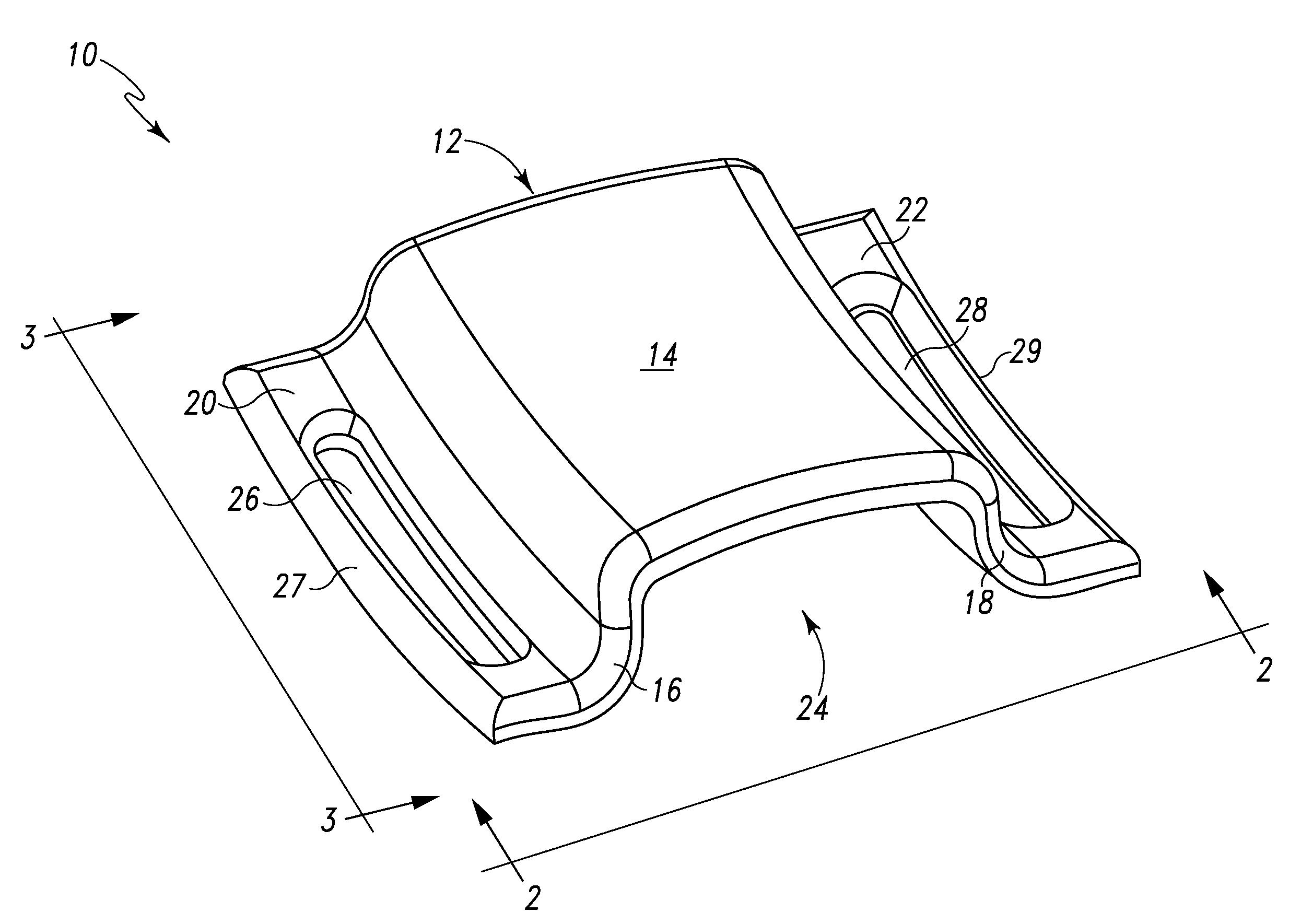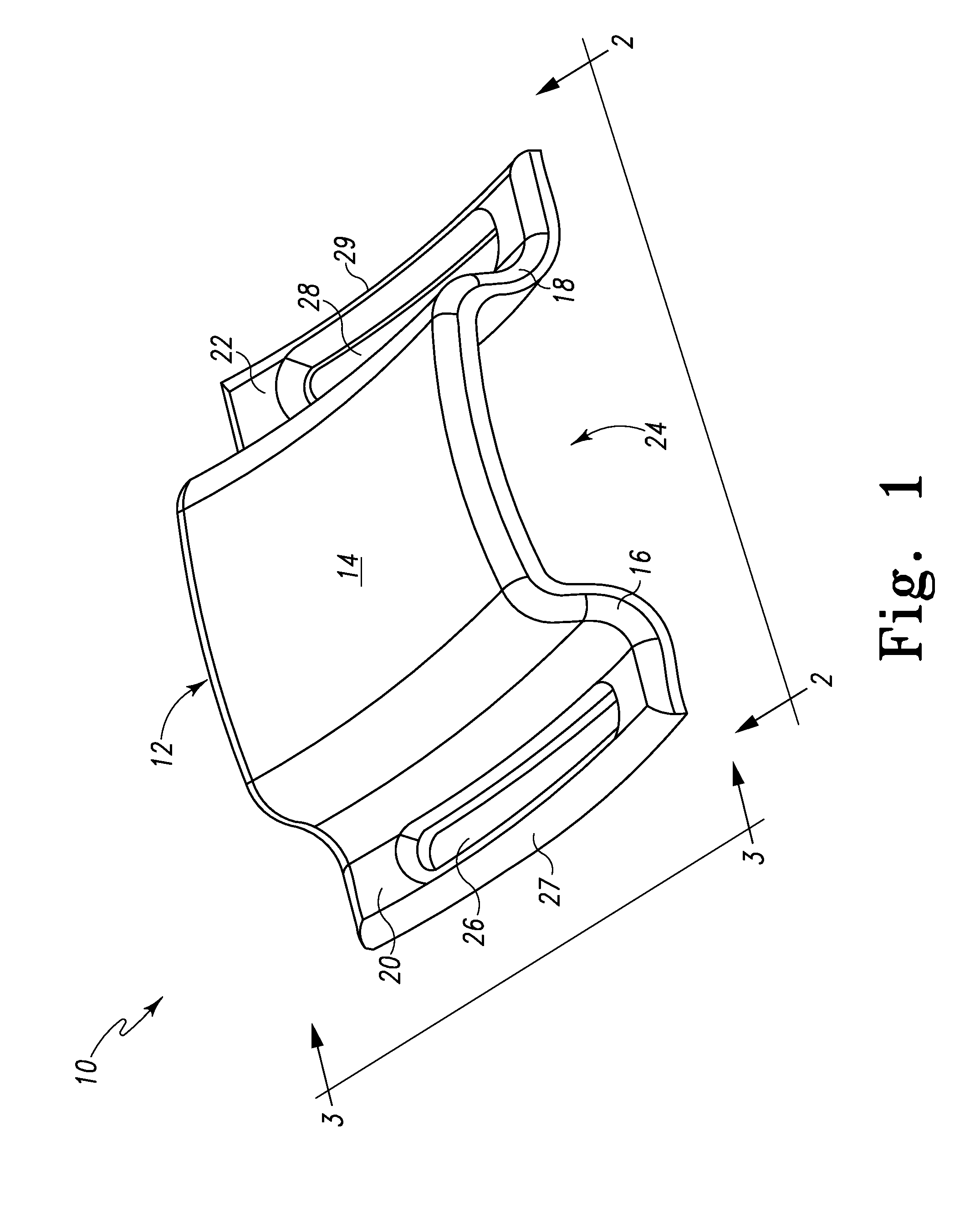Posterior spinal prosthesis
a spinal prosthesis and posterior spine technology, applied in the field of spinal prosthesis, can solve the problems of insufficient to address the overexposure of the vulnerable spinal cord, and the potential for and other known spinal devices also do not address these problems. , to achieve the effect of preventing post-operative soft tissue cavitation
- Summary
- Abstract
- Description
- Claims
- Application Information
AI Technical Summary
Benefits of technology
Problems solved by technology
Method used
Image
Examples
Embodiment Construction
[0030]Referring to FIGS. 1-3 there is depicted an exemplary embodiment of a posterior spinal prosthesis, generally designated 10, fashioned in accordance with the present principles. It should be appreciated that the present posterior spinal prosthesis may be used for any portion of the spine such as on the cervical vertebrae, the thoracic vertebrae and / or the lumbar vertebrae. However, the present posterior spinal prosthesis is shown and described with reference to the cervical vertebrae. The present spinal prosthesis 10 is adapted to provide posterior coverage of an exposed spinal cord, soft tissue, Foramen and / or adipose tissue, of one or more vertebrae as a result of the removal the spinous processes and / or the spinous process and laminar hoods from one or more vertebrae of the spine such as for a spinal decompression procedure. The posterior spinal prosthesis also provides posterior stabilization of the associated vertebrae as well as aiding in preventing post operative soft ti...
PUM
 Login to View More
Login to View More Abstract
Description
Claims
Application Information
 Login to View More
Login to View More - R&D
- Intellectual Property
- Life Sciences
- Materials
- Tech Scout
- Unparalleled Data Quality
- Higher Quality Content
- 60% Fewer Hallucinations
Browse by: Latest US Patents, China's latest patents, Technical Efficacy Thesaurus, Application Domain, Technology Topic, Popular Technical Reports.
© 2025 PatSnap. All rights reserved.Legal|Privacy policy|Modern Slavery Act Transparency Statement|Sitemap|About US| Contact US: help@patsnap.com



